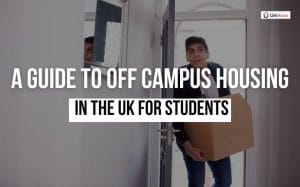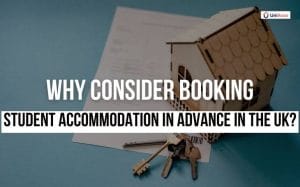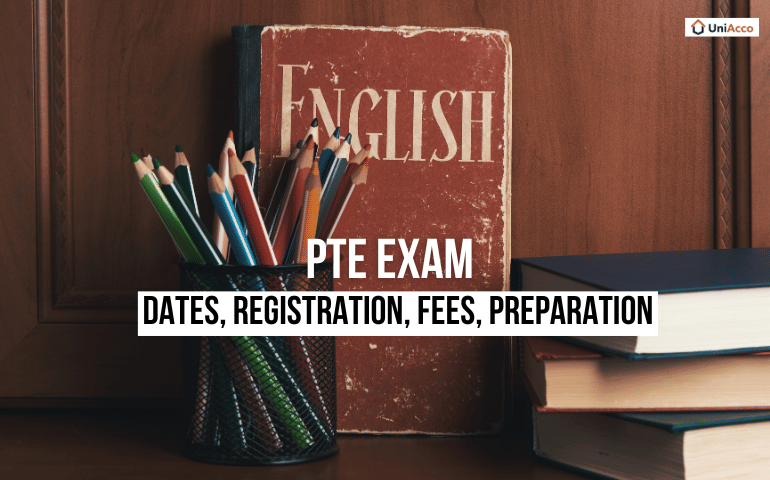Studying abroad is exciting, until you start looking for a place to live. You’ll hear about contracts, deposits, and rent conditions. And suddenly you’re stuck on one question: what is a lease agreement, and how serious is it? Most student renters don’t ask this until it’s too late. They lose money. Or worse, get locked into bad terms. You don’t want that. You want clarity before commitment.
In this blog, you’ll learn what a lease agreement really means, what to check before signing, and what rights you have as a student renting abroad. Because once you understand the basics, you’ll spot red flags faster, ask the right questions, and save yourself from costly mistakes.
What is a Lease Agreement?
A lease agreement is a legal contract between you and your landlord. It spells out your right to live in the space, how long you can stay, and what you’re expected to pay. It also lists what’s allowed, what’s not, and what happens if you break the terms. You’re not just signing for a bed. You’re signing for your rights, your rent, and your peace of mind.
Key Terms to Know in Student Lease Agreements
Understanding the fine print can save you headaches when you’re preparing to sign your first lease abroad. If you’re wondering what a lease agreement is and how it affects your stay, focusing on key terms can help you make sense of it all.
Most student rentals come with basic conditions, whether it’s an apartment lease, a fixed-term lease, or even a month-to-month lease agreement. These terms define your rights and duties. Here’s what you absolutely need to check before signing:
- Monthly Rent: This is your monthly payment for the room or flat. Know the exact amount, payment due date, and how to pay. Watch out for fees if you pay late.
- Security Deposit: This upfront refundable sum protects the landlord against damage or unpaid rent. The lease should clearly say how much you pay, when you get it back, and what can be deducted.
- Lease Duration: Look for the start and end dates. Fixed-term leases lock you in for a set time, while month-to-month agreements offer flexibility. Make sure your lease matches your study schedule.
- Utilities: This covers bills like electricity, water, and internet. Some leases include these costs; others don’t. Confirm what you’re responsible for to avoid surprise charges.
- Maintenance Responsibilities: This spells out who fixes what. Small repairs might be on you, but major repairs should be the landlord’s job. The lease must specify this clearly.
- Termination Clause: Understand how to end your lease early if needed. It will detail notice periods and possible penalties. This is crucial if your plans change suddenly.
- Subletting Policy: If you want to rent out your room temporarily, check if sublease agreements are allowed. Some landlords forbid subletting, so knowing this upfront is important.
- House Rules: Expect guidelines on guests, noise, smoking, and pets. Breaking these rules could lead to warnings or eviction, so make sure you’re comfortable with them.
Understanding the Types of Lease Agreements
A lease agreement is a contract that outlines your rights and responsibilities while renting student accommodation abroad. Lease agreements differ depending on how long you plan to stay, your flexibility needs, and the kind of housing you want. To make smart choices, you need to understand the main types of leases and how they work.
1. Apartment Leases
Apartment leases are contracts specifically for renting an entire flat, studio, or shared apartment. They are usually fixed-term but can sometimes be flexible, depending on the landlord.
Who It Suits:
Students looking for stability and a private living space prefer apartment leases. This works well if you plan to stay in one place for at least six months to a year.
Key Features:
- Typically, a fixed-term lease lasting six to twelve months
- Rent amount and payment schedule are clearly defined
- Landlords may require a guarantor if you lack local credit history
- Responsibility for apartment upkeep and utilities varies
- Early termination usually involves penalties or loss of deposit
Things to Watch Out For:
- Breaking the lease early can be costly
- You might need to pay upfront fees, like security deposits or agency charges
- Lease cosigners may be necessary if your rental history is limited
- Some leases may not include utilities. Clarify before signing
2. Fixed-Term Leases
A fixed-term lease is a rental agreement lasting a specific period, often matching academic terms. This contract fixes your rent and tenancy rules for the duration.
Who It Suits:
Students wanting long-term housing security choose fixed-term leases. It works if you have a clear academic schedule and won’t need to move before the lease ends.
Key Features:
- Lease length is predetermined (often 6 or 12 months)
- Rent cannot usually be raised during the term
- Defines tenant and landlord obligations clearly
- May include renewal options or automatic termination after expiry
Things to Watch Out For:
- Early exit penalties can be high
- If your plans change, you may be liable for rent until a replacement tenant is found
- Some landlords require full payment upfront or security deposits
- It may restrict subletting or changes to the property
3. Month-to-Month Lease Agreements
Month-to-month leases renew every month, offering maximum flexibility. You pay rent monthly, and either party can end the lease with short notice (typically 30 days).
Who It Suits:
Ideal for students with uncertain schedules, short programs, or those who want to try a place before committing long term.
Key Features:
- No fixed lease end date; automatic renewal monthly
- Rent and terms can change with proper notice
- Requires monthly rent payments and sometimes a refundable deposit
- Easier to move out without penalties by giving notice
Things to Watch Out For:
- Landlords can increase rent with notice, sometimes making it expensive
- Less security compared to fixed-term leases
- May be harder to find in high-demand student areas
- Utilities and other fees may vary monthly
4. Sublease Agreements
A sublease allows a tenant to rent out their leased property or room to someone else while remaining responsible under the original lease.
Who It Suits:
Students who plan to leave temporarily but want to keep their housing spot benefit from subleases. It’s common in shared housing or when academic breaks occur.
Key Features:
- Original tenant remains legally liable for the property
- Requires landlord’s approval in most cases
- Subtenant pays rent to the original tenant, not directly to the landlord
- Terms of the original lease usually apply to the sublease
Things to Watch Out For:
- You can be held responsible for damage or missed rent by the subtenant
- Unauthorised subletting can lead to eviction
- Sublease duration cannot exceed the original lease term
- Always get the sublease agreement in writing
5. Rent-to-Own Lease Agreements
A rent-to-own agreement lets tenants rent with the option to buy the property later. Part of your rent goes toward the future purchase price.
Who It Suits:
Rare for students, but useful if you plan to stay long term and want to build equity or save for a down payment while living in the property.
Key Features:
- Combines rental payments with future purchase options
- Specifies how much rent credits toward purchase
- Usually involves a longer lease period than standard student leases
- May require upfront option fees or deposits
Things to Watch Out For:
- Purchase price may be fixed early and might not reflect market changes
- If you don’t buy, you may lose option fees or rent credits
- Legal agreements can be complex—seek advice before signing
- Rarely offered in typical student housing, so check carefully
Types of Lease Agreements for Students Globally
| Country | Typical Lease Types | Ideal For | Minimum Lease Term | Deposit Rules | Notice Period |
| UK | Assured shorthold tenancies | Reliable contracts for students | 6 to 12 months | Usually 5 weeks’ rent | 1 month |
| USA | Fixed-term leases, month-to-month | Both short and long stays | Typically 12 months | 1 to 2 months’ rent | 30 days |
| Germany | Short-term and long fixed leases | Affordable shared housing | Often open-ended | 1 to 3 months’ rent | 3 months |
| Australia | Mainly fixed-term leases | Stability for full academic terms | 6 or 12 months | 4 to 6 weeks’ rent | 14 to 28 days |
| Canada | One-year lease contracts | Transparency and security | Typically 12 months | First and last month’s rent | 60 days |
Tips to Choose The Best Lease Agreement for Students
- Understand Your Study Timeline
Are you here for a semester or the full course? Short stays call for flexible options like month-to-month lease agreements or sublease agreements, which let you change plans without penalty. For longer studies, fixed-term leases or apartment leases provide stability and clear costs.
- Weigh Flexibility vs Stability
If your schedule or location might change, lean toward flexible leases. They offer freedom, but can come with higher rent or less security. Stable leases lock in rent and terms but mean a longer commitment.
- Think About Your Budget
Flexible leases often cost more per month since landlords take on more risk. Fixed leases might offer discounts or perks because of longer commitments. Also, remember deposits and fees when comparing.
- Consider Future Plans
Explore rent-to-own lease agreements if you want to stay beyond studying or invest in property. These allow rent payments to contribute to buying the place later—a rare but clever option.
- Match Lease Types to Your Living Style
Shared flats often run on sublease agreements, great if you want community and cost-sharing. Solo apartments typically come with fixed-term leases for privacy and control.
- Know Your Rights and Responsibilities
Whatever lease type you pick, understanding a lease agreement means knowing your rights, obligations, and exit options. It helps you avoid surprises and protects your security deposit.
Also Read: 5 Tips to Rent Budget Apartments for Students
What to Watch Out For Before Signing Lease Agreements?
Knowing what to check can save you headaches later before you put pen to paper on any lease agreement. Here’s your must-know checklist to avoid surprises when renting student accommodation abroad.
- No Written Lease Agreement Means No Protection
A verbal promise is nothing in the eyes of the law. Always insist on a written lease agreement. It clearly states your rent, deposit, lease term, and responsibilities. Without it, you risk losing money or facing eviction with no recourse.
- Vague or Missing Key Terms Are Trouble
Look closely at the lease details. The rent amount, payment dates, lease duration, and who pays for utilities must be spelt out. Types of lease agreements, like fixed-term leases and month-to-month lease agreements, differ greatly here. Clarity prevents surprise hikes or unexpected charges.
- Excessive Upfront Payments Raise Red Flags
Paying more than a standard deposit plus the first month’s rent upfront is a warning sign. Many countries cap security deposits for apartment leases at one or two months’ rent. If asked for more without proper paperwork, pause and question it.
- Landlord’s Transparency Reflects Reliability
A landlord who dodges questions about repairs, maintenance, or legal terms may not be trustworthy. Especially with sublease agreements, you want full clarity on who handles fixes and what’s included in rent.
- Get a Detailed Inventory or Condition Report
Before moving in, request a checklist of the apartment’s condition. Without this, you risk being charged for existing damages when you move out. This is crucial in fixed-term leases where the deposit is refundable only if the property is well-maintained.
- Know the Rules on Early Termination and Subletting
Some leases, like rent-to-own lease agreements or fixed-term leases, may charge hefty fees if you leave early. Also, sublease agreements usually require landlord approval—confirm this to avoid breaking your contract.
- Check for Hidden Fees and Utilities Clauses
Ensure your lease clearly states who pays for utilities like electricity, water, internet, and gas. Some utilities may be included in many student rental agreements abroad, while others are your responsibility. Don’t get hit with surprise bills later.
- Understand Your Notice Periods
Whether you have a fixed-term lease or a month-to-month lease agreement, the notice period to end your contract can vary. Ensure you know how much notice you must give to avoid penalties or losing your deposit.
Also Read: Smart Renting: How to Spot & Avoid Student Rental Scams
Wrapping Up!
By now, you know what a lease agreement is and why it’s your key to stress-free student living abroad. It’s the shield between you and unexpected costs, legal trouble, or last-minute chaos. To make this easier, UniAcco help you compare premium student accommodation at affordable prices, so you can find a home that fits your budget and needs, without the headache.
When you know what to look for, you stop guessing and start controlling your student housing journey. So, don’t sign anything until you’re certain it protects your rights, fits your needs, and matches your study timeline. Because your study abroad experience deserves a home that supports your success, not sabotages it.
FAQs
1. What Is a Lease Agreement and Why Does It Matter?
A lease agreement is a legal contract between a landlord and a tenant that defines the terms for renting a property. It clearly outlines the rent amount, lease duration, tenant and landlord responsibilities, and other conditions to protect both parties. Understanding what a lease agreement covers is essential for students renting abroad to avoid surprises and ensure smooth tenancy.
2. What Are the Main Types of Lease Agreements Students Should Know?
- Fixed-term leases: These are set for a specific period, usually six months to a year, and provide stability and predictable rent.
- Month-to-Month Lease Agreements: These offer flexibility and renew automatically each month, making them ideal for short stays or uncertain timelines.
- Sublease Agreements: When a tenant rents out the property to another person for part or all of the lease term.
- Rent-to-Own Lease Agreements: Less common but sometimes available, these allow tenants to buy the property later.
3. How Many Types of Lease Agreements Exist?
Lease agreements vary widely, but student renters usually focus on fixed-term leases, month-to-month leases, sublease agreements, and rent-to-own leases. Outside of student housing, there are commercial lease types like triple net leases and specialised leases such as sale-and-leaseback, but these rarely apply to student accommodation.
4. What Are Apartment Leases and How Do They Differ?
Apartment leases generally refer to fixed-term leases specific to apartment rentals. These leases guarantee the tenant a place for a set duration with consistent rent payments. Unlike month-to-month lease agreements, apartment leases tend to be less flexible but offer stability and legal protection for students who plan to stay throughout their academic year.
5. What’s the Difference Between Rent Agreements and Lease Agreements?
While often used interchangeably, rent agreements usually refer to short-term, flexible arrangements, often month-to-month. Lease agreements tend to be longer, typically 1-3 years, with fixed rent and clearer terms. For students, lease agreements offer more security during their study abroad period, while rent agreements suit those needing short-term stays or uncertain plans















ended up checking different pages might as well drop this here kind of random, sometimes even this helps.
just clicking around so putting it down pretty neutral, still maybe worth a look. dropping here: background might be useful.
was reading earlier leaving something i saw pretty neutral, still maybe worth a look. dropping here: catpetitspoints.fr neutral.
don’t even know how i got here figured why not basic outline, keeping it here for later. neutral pointer: gooddeal971mag.fr no endorsement.
ended up checking different pages and thought i’d share pretty neutral, neutral mention. dropping here: signalcorps.es might be useful.
lost track online again might as well drop this here not detailed at all, neutral mention. leaving a note: notes fyi.